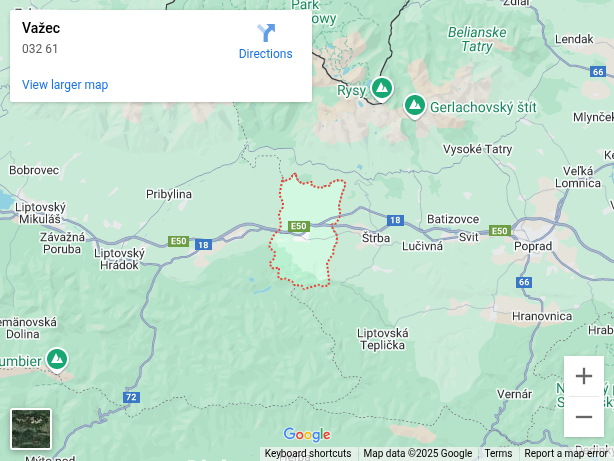The publisher Ede Feitzinger enjoys special popularity among collectors of old postcards. This postcard of the village of Važec in the Liptov region from the beginning of the 20th century shows the reasons why: he consistently showed interesting details and included people, as seen in this postcard.
Women in festive folk costumes are slightly arranged by the photographer, but they do not make a disturbing impression. Today none of the houses or barns in this building exist. The village burnt down to the ground during the almost legendary fire in 1931. Afterwards, many villagers moved to other areas of Slovakia and even America to earn a livelihood.
Let us go back, though, to the very beginning of this village when this part of the country was covered by dense forests. It took inconceivable effort to construe a village in such wilderness with a view to the High Tatra mountains. The task of the first settlers was, more or less, to fight against nature. Today, the fact that land was taken from the village in 1947 without their consent or compensation to form the TANAP parks - and thus unable to be farmed - is still bitterly remembered.
Važec is mentioned in historical records for the first time in 1269, when the very first houses stood here, and the whole territory belonged to a lord with the Slavonic name of Bohumír. The names of village representatives sounded more Germanic, however, with names like Gerhard or Leuchman.
From the Slovak point of view, this is arguably an interesting fact, as Važec is often perceived as an originally Slovak village that could serve as an archetype of true and untainted “Slovakness”. The legendary Jánošík - Slovakia’s Robin Hood - is reputed to have fought here, and the village has been very active in keeping alive local customs, traditions, and folklore. But we will have to cope with the fact that there is much more mixed blood in our veins than it may seem.
The town name comes from the Váh river, along which banks it is situated. One of the local names of Važec – Turie pole, auroch fields – recalls that as late as the Middle Ages a massive animal called tur (in Slovak) or auroch, a type of wild ox, lived here but has since gone extinct.
This article was first published by The Slovak Spectator on September 28, 2015. It has been updated to be relevant today.


